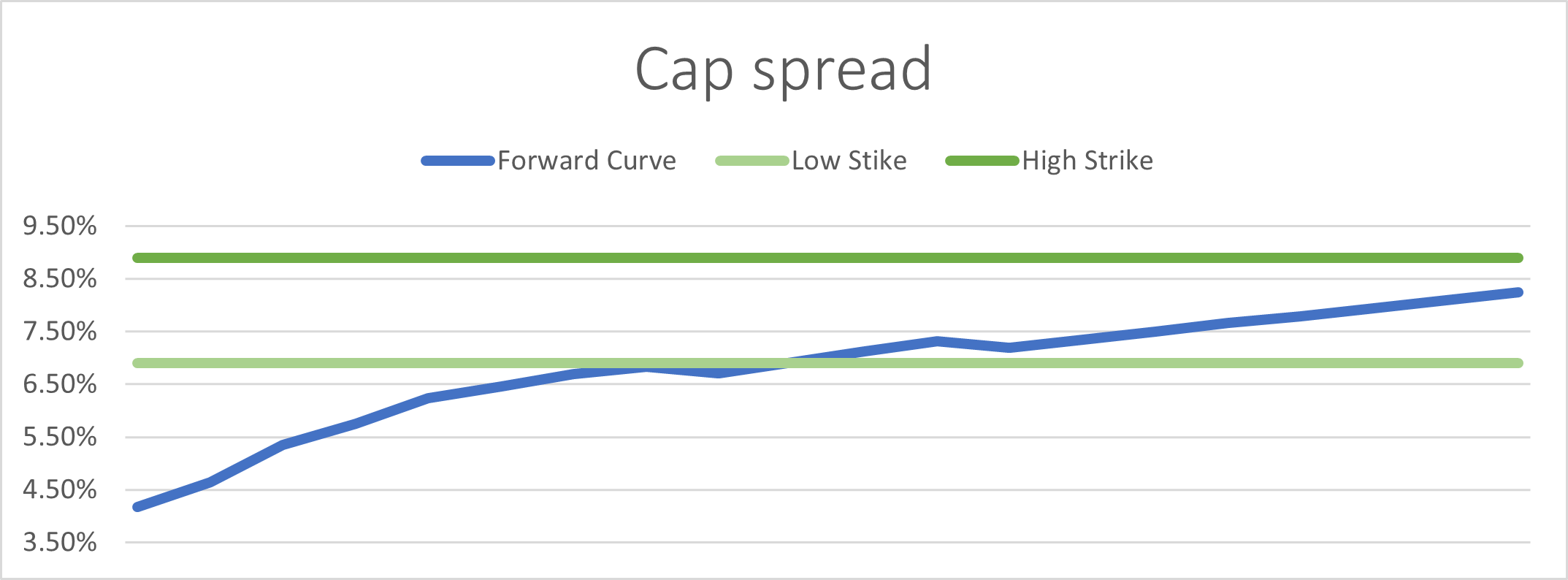We use cookies to provide you with the best possible online experience. Read our cookie policy.
Hedging interest rate risk: a more balanced approach
By Stephan Labuschagne
The South African corporate space is adequately versed in the use of risk management tools to mitigate interest rate risk: the main avenues being either an interest rate swap or an interest rate cap (both of which can be a costly exercise if the market moves against you). A good way to think about hedging interest rate risk is by comparing it to insurance – most of the time it will end up costing you money, but you can sleep a little easier at night knowing that your assets are adequately covered.
The balance is in choosing the amount of risk that you are comfortable taking and hedging only the risk or portion of the risk that you are most concerned about. As with general insurance, no one wants to be over-protected or pay too much of a premium. In general, interest rate hedging is done in absolutes, providing an over-protected risk profile at elevated costs.
Cap spread
One way to find a balance in hedging is through limited protection on interest rate risk. This can be done with a cap spread. With the swap curve being as steep as it is at the moment and a few economists believing that 3-month JIBAR will realise lower than the current market prediction, an interest rate cap might seem like the obvious way to go. This is one way to eliminate the negative carry of the interest rate swap and you can participate favourably if rates fall lower than forecast.
The challenge with an interest rate cap on its own is the day one premium that needs to be invested. In the current ‘almost post-COVID’ economy, businesses tend to not have cash lying around, which makes the interest rate swap seem more attractive as there is no upfront premium. The issue is that a company might be hedging more of its risk profile than it needs to.
As with an interest rate cap, a cap spread protects a company if rates rise more than an agreed-on strike rate. Unlike a cap, a cap spread however only protects you for a specified number of basis points above the cap strike. The upside of this hedge is the lower premium and a more realistic interest rate risk profile.
For example, if we look at the current 3-month JIBAR forward curve, a company requires a five-year floating rate risk profile to be hedged against adverse movements in the interest rate curve. An interest rate swap can be struck at 6.9% all costs included. The same strike interest rate cap can be bought for R45,150 for every R1m notional, but a cap spread with a lower strike of 6.9% and protection of 200bp to 8.9% can be bought at a premium of R22,600 for every R1m notional hedged.
The economic breakeven and opportunity costs between the above structures can be summarised by calculating the break-even forward rate between the above-mentioned structures.
Benefits
The real value in the cap spread is when rates fall much lower than the expected forward curve. Corporates can participate in the favourable conditions of 3-month JIBAR remaining lower for longer and be content with a decent amount of protection should rates blow up.
One more benefit of purchasing a cap spread as a hedging instrument is that like an interest rate swap and interest rate cap, a cap spread is an eligible hedging instrument as defined by IFRS 9 hedge accounting. It can be applied to protect the income statement from showing volatile earnings and smoothing net interest income over time.
Labuschagne is Technical Structurer in RMB's Markets division









